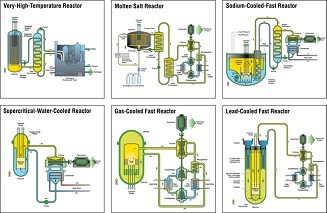Generation IV International Forum & Reactor Concepts
GIF meetings began in January 2000 when the U.S. Department of Energy’s Office of Nuclear Energy, Science and Technology convened a group of senior governmental representatives from the original nine countries to begin discussions on international collaboration in the development of Generation IV nuclear energy systems. Generation IV designs will use fuel more efficiently, reduce waste production, be economically competitive, and meet stringent standards of safety and proliferation resistance. With these goals in mind, some 100 experts evaluated 130 reactor concepts before GIF selected six reactor technologies for further research and development. These include the Gas-cooled Fast Reactor (GFR), Lead-cooled Fast Reactor (LFR), Molten Salt Reactor (MSR), Supercritical Water-cooled Reactor (SCWR), Sodium-cooled Fast Reactor (SFR) and Very High Temperature Reactor (VHTR).

Since 2009, thanks to the release of CATHARE 2 V2.5_2, the CATHARE code has evolved in a reliable system tool able to study a large number of Gen IV reactor concepts in the scope of a best-estimate code used for thermal–hydraulic nuclear safety analyses.